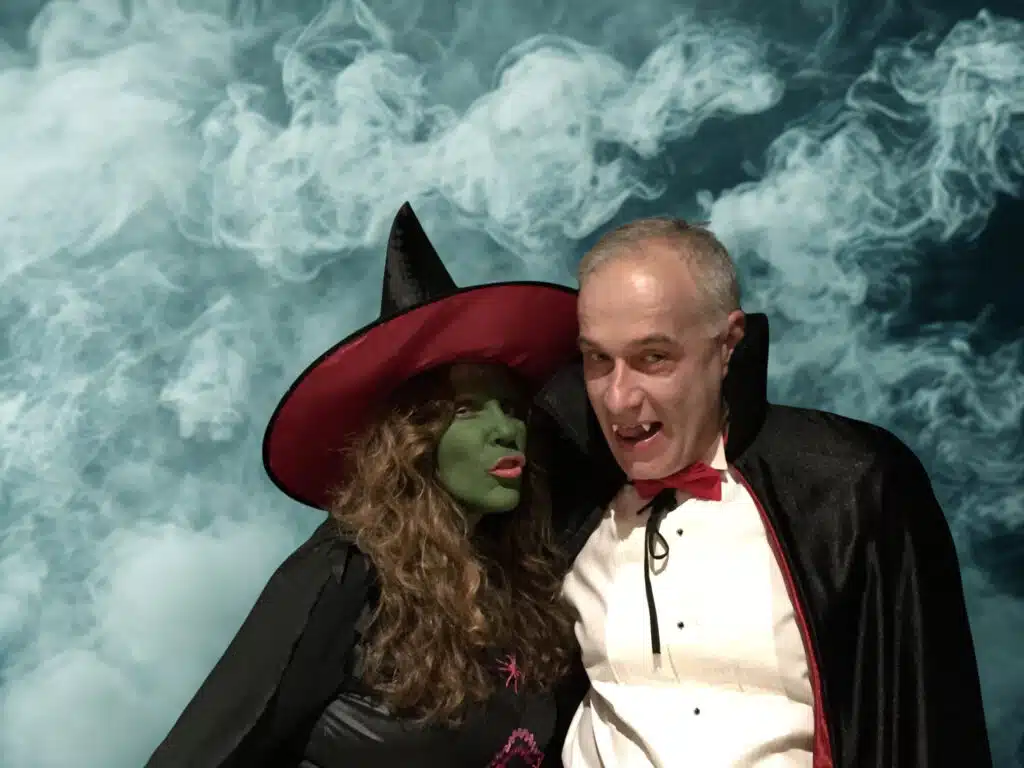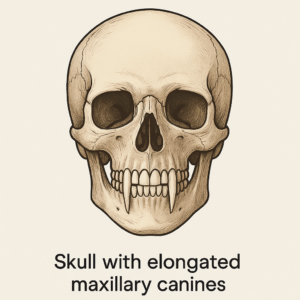Real vampire teeth cases may sound like fiction, but some people are naturally born with elongated canine teeth that closely resemble fangs. These unusual dental features are often caused by conditions like macrodontia (enlarged teeth) or hyperplasia (excessive tooth growth). In cultures steeped in vampire legends, people with these “fangs” were sometimes mistaken for the supernatural. Could real vampire teeth cases have helped shape centuries of folklore? Let’s take a closer look.
What Causes Real Vampire Teeth Cases?
Conditions like macrodontia and dental hyperplasia can lead to canines that grow noticeably longer than usual. While rare, these cases have been recorded worldwide. Anthropologists have even discovered ancient skulls with unusually long canine teeth — a detail that may have contributed to vampire myths in Europe and beyond.
Other factors can exaggerate the look of “fangs.” For example, gum recession may expose more of the tooth, making canines look longer. Orthodontic crowding can also shift teeth into sharper positions.
- Genetics (macrodontia, hyperplasia)
- Gum recession
- Orthodontic crowding
- Cosmetic modifications
Are Vampire Teeth Natural or Cosmetic?
Some “vampire smiles” occur naturally due to genetics or rare dental conditions. Others are created intentionally through dental work, including crowns, bonding, or custom veneers. While the reasons differ, the result is the same: teeth that evoke the look of legendary creatures.
From a dental health perspective, most real vampire teeth cases are harmless. However, elongated canines may sometimes interfere with the bite, contribute to crowding, or cause uneven wear. Dentists may recommend orthodontic treatment or cosmetic contouring in such cases.

Cosmetic vampire teeth veneers — a modern twist on an ancient legend. Unlike real vampire teeth cases, these are made by dentists on request.
Modern cosmetic veneers shaped like fangs are increasingly popular.
The Hidden Problem with Cosmetic Vampire Teeth
While some people think it’s cool to modify their smile with fang-shaped veneers or crowns, there’s a hidden downside. In humans, chewing relies on the lower jaw moving side-to-side as well as up-and-down. If the canines are made too long, they can block that lateral movement — making chewing more difficult and sometimes uncomfortable. Dogs, by contrast, only chew up and down, so elongated canines don’t affect their bite the same way. You could say that’s a weird dental fact within a weird dental fact!
Vampire Teeth in Modern Pop Culture
In today’s world, people with naturally sharp or prominent canines often embrace their unique look. Some consider it a personal trademark. Others opt for cosmetic reshaping to achieve a more traditional smile.
Cosmetic dentists report a surge in fang-shaped veneer requests around Halloween. Thanks to movies, books, and TV shows that glamorize vampires, the desire for “fangs” isn’t just a myth — it’s a modern trend.
Folklore and Anthropology
The link between vampire legends and unusual teeth is stronger than most people realize. In Eastern Europe, elongated canines were sometimes seen as proof that a deceased person had become a vampire. Archaeologists have found skeletons buried with rocks in their mouths or stakes through their chests — attempts to “neutralize” suspected vampires. (See also: Smithsonian on vampire burials).
Stories of blood-drinking creatures exist in many cultures worldwide. While the details differ, the idea that a person’s appearance could trigger myths is a common thread. In that sense, real vampire teeth cases are an intriguing example of how biology and legend collide.
FAQs About Real Vampire Teeth Cases
Can real vampire teeth cases cause dental problems?
Yes. If elongated canines interfere with a person’s bite, they can contribute to crowding, wear, or gum irritation. A dentist may recommend reshaping or orthodontic care in those cases.
Do dentists make fake vampire teeth?
Yes. Some people request cosmetic veneers or crowns shaped like fangs — especially around Halloween or for cosplay. These are generally safe when done professionally and on a temporary basis, but DIY options can damage enamel.
How rare are natural vampire teeth cases?
True cases caused by genetics or conditions like macrodontia are very rare. Most “vampire smiles” you see today are cosmetic enhancements.
Can teeth whitening make vampire teeth stand out more?
Definitely. Whitening treatments brighten enamel, which can make elongated canines look even sharper by contrast. This is one reason why fang-like veneers often come with whitening packages.
Do vampire teeth run in families?
Sometimes. Tooth shape and size are strongly influenced by genetics. If one parent has naturally sharp canines, their children may inherit similar features — although true real vampire teeth cases remain uncommon.
Curious about dental health beyond rare cases?
Discover our guide on supplements that support strong teeth and gums, plus overall wellness.
Conclusion
Real vampire teeth cases show us how closely nature and legend can overlap. These rare dental features may have inspired some of our spookiest stories — and they still fascinate us today. Whether you view them as creepy, cool, or just curious, they’re a truly bizarre dental phenomenon.
🔗 Want more weird dental trivia? Discover the strange story behind the phrase “Sweet Tooth.”
Or explore 10 unusual dental floss hacks that go far beyond oral care.
For trustworthy dental health information, visit the American Dental Association’s resources.





